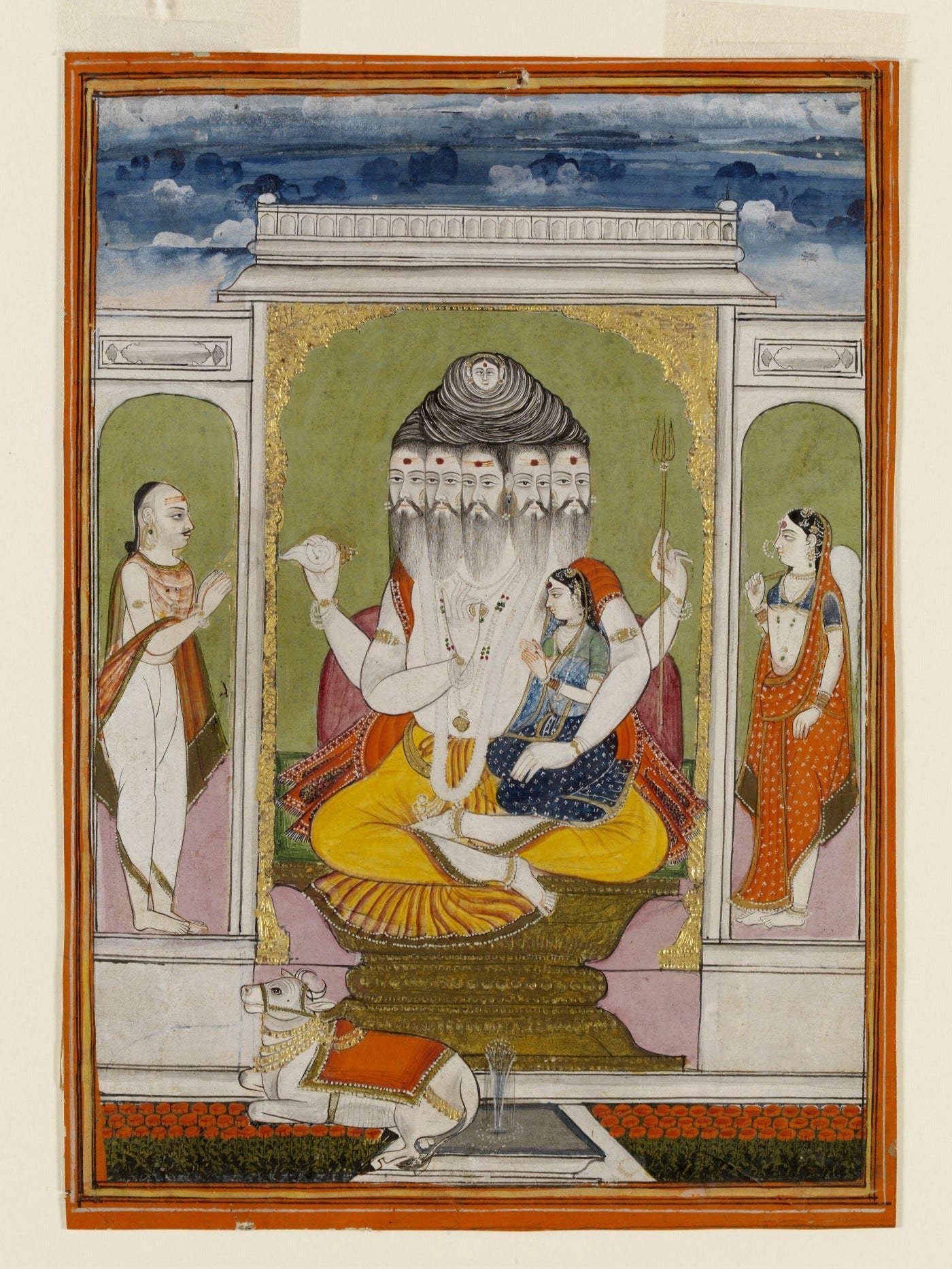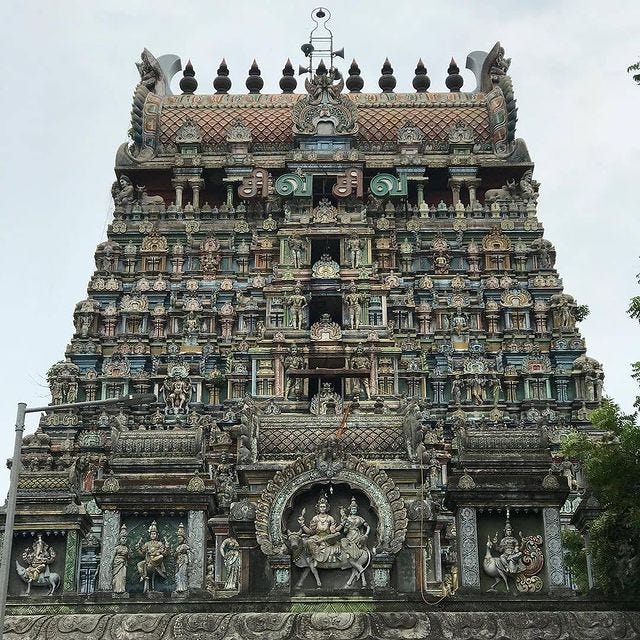Week 107: Pancanana Shiva, Aesthetic
1/2/2022 - Modern Hindu Content
This week we have an exploration of the five-faced Lord Shiva, and an aesthetic!
Religion Highlight: Five Faces of Lord Shiva
Pañcānana Śiva (पंचानन शिव) reflects what is said to be the five aspects of Lord Shiva. These attributes are:
Creation
Preservation
Concealment / Obscuring Grace
Revelation
Destruction
Himalayan Academy goes into more explanatory detail in their article on the topic, quoted below:
Siva Nataraja, Lord of Dance, a well-known murti (worshipful icon), clearly depicts these five actions. Creation, or emanation (srishti), is represented by His upper right hand holding the drum upon which He beats Paranada, the Primal Sound, from which issue forth the rhythms and cycles of creation. Preservation (sthiti) is represented by His lower right hand, held in the gesture of blessing, abhaya mudra, indicating “fear not.” Destruction (samhara), dissolution or absorption, is symbolized by the fire in His upper left hand, held in ardha-chandra mudra, “half-moon gesture.” Obscuring grace (tirodhana), the power which hides the truth from souls, thereby permitting experience, growth and eventual fulfillment of destiny, is represented by His right foot upon the prostrate person, apasmarapurusha, who symbolizes the principle of ignorance, or anava. Revealing grace (anugraha), which grants knowledge and severs the soul’s bonds, is symbolized by Siva’s raised left foot, and by His lower left hand, held in gajahasta or “elephant trunk” mudra, inviting approach
The Hindu Aesthetic blog, in their exploration of the topic, delve more heavily into Sanskrit texts, and highlight the interaction of 5 x 5 traits and elements of his nature:
In his fivefold nature, Śiva is therefore identical with the five times five elements of reality. It is therefore easily intelligible that the author of the Śvetāśvatara-Upaniṣad, whose influence upon the development of Śaivite ideas is unmistakable, describes the Highest Being as a river of five streams, from five sources, whose waves are the five vital breaths, whose original source is fivefold perception-and-intelligence (buddhi), which has five whirlpools, an impetuous food of fivefold misery, divided into five distresses and five joints. According to the traditional explanation the streams are the five senses; the sources, the five elements; the waves, the five organs of action (or the five prāṇas); the whirlpools, the objects of sense; the fivefold misery, the successive painful stages of development: embryo, birth, old age, illness, death; the five distresses, the so-called kleśas, i.e. ignorance, egotism, desire, aversion, tenacity of mundane existences.
For more reading on the topic, consult the articles linked above (Himalayan Academy, Hindu Aesthetic) , or the books listed below:
Siva Purana by J. L. Shastri
Visnuism and Sivaism: A Comparison by Jan Gonda
Elements of Hindu Iconography by T. A. Gopinatha Rao

